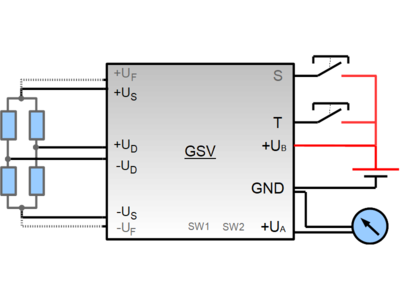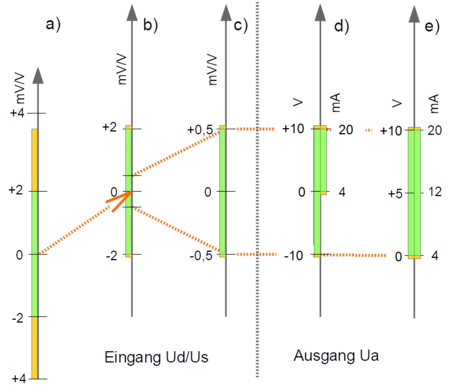
UA: analog output; UB: operating voltage; T: digital zero-setting input; S: digital input for autoscale function; SW1, SW2: threshold outputs;
Zero setting function
Almost all measuring amplifiers from ME measuring systems have a digital control input “T” or “Tara”. An automatic zero adjustment is triggered by a signal at the control input. Depending on the model of the measuring amplifier or the configuration setting, 0V or 4mA or 12mA are then present at the output.
The triggering (debounce time, level, edge) differs depending on the measuring amplifier model.
b) By using the zero setting function, a constant offset is taken into account. The offset is stored in a non-volatile memory and is retained after a power failure.

Scaling function
c) Most measuring amplifiers offer the possibility to adjust the input sensitivity in 4 steps: 2 mV/V - 1 mV/V - 0.5 mV/V - 0.2 mV/V. (GSV-1, GSV-11)
Some measuring amplifiers have an “autoscale function” (GSV-6L, GSV-6K, GSV-15). This continuously adjusts the input sensitivity so that the signal at the input is scaled to 100% of the output signal, for example. The autoscale function is also scalable, so that it can be scaled to 50% or 10% of the output signal, for example. This function is useful if, for example, only a partial load can be applied during calibration.
d) In addition to the standard variant with analog output -10V to +10V, other model variants with e.g. 4...20mA or -5V ...+5V are available.
e) The output signal can be shifted e.g. by +5V or +12mA or other offsets.


